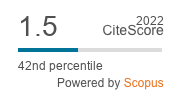The horse-rider system is of great interest in understanding the mechanics involved in optimising locomotor function and performance in the ridden horse. Adult riders (n=30) attending a rider conference volunteered to take part in the study. Riders were asked to mimic riding position by positioning themselves symmetrically on their seat bones (ischial tuberosities) sitting on a (Pliance) pressure mat which was placed on a static platform. Riders were also asked to mimic even rein contact using reins with gauges which were attached to a solid wall. When satisfied that they were sitting symmetrically and had an even rein contact, pressure and rein measurements were captured for 5 s and repeated three times. A paired T Test was carried out to determine differences between left and right ischial tuberosities and rein pressures. Using a static model, this study found that the riders had significantly more pressure beneath the left ischial tuberosity (mean ± standard deviation, 3.22±1.43 N/cm2) compared to the right (2.65±1.49 N/cm2) (P=0.04) and no significant differences were observed between left (6.37±2.42 N) and right rein pressure (6.38±2.66 N) (P=0.95). Whilst sitting on a static platform, differences in ischial tuberosity pressure in adult riders were observed despite these riders’ perception that their seat was symmetrically weighted. These differences observed need to be investigated further, dynamically, to determine if there is a similar trend in the ridden situation.
RESEARCH ARTICLE
Riders’ perception of symmetrical pressure on their ischial tuberosities and rein contact tension whilst sitting on a static object
R. Guire Related information
1Centaur Biomechanics, 25 Oaktree Close, Moreton Morrell, Warwickshire, CV35 9BB, United Kingdom.
2Royal Veterinary College, The Royal Veterinary College, Hawkshead Lane, North Mymms, Hatfield, AL9 7TA, United Kingdom.
*info@centaurbiomechanics.
, H. Mathie Related information2Royal Veterinary College, The Royal Veterinary College, Hawkshead Lane, North Mymms, Hatfield, AL9 7TA, United Kingdom.
*info@centaurbiomechanics.
4Aegrus Equestrian, Golland Farm, Golland Lane, Burrington, Umberleigh, North Devon, EX37 9JP, United Kingdom.
, M. Fisher Related information3Woolcroft Saddlery, Mays Lane, Wisbech PE13 5BU, United Kingdom.
, D. Fisher Related information3Woolcroft Saddlery, Mays Lane, Wisbech PE13 5BU, United Kingdom.
Comparative Exercise Physiology: 13
(1)- Pages: 7 - 12
Published Online: March 06, 2017
Abstract
Keywords: seat bones, asymmetry, locomotion, rein tension
2023 Journal Impact Factor
0.9
source: Journal Impact Factor 2023™ from Clarivate™

Institutional Offers
For institutional orders, please contact [email protected].
Purchase Options
-
-
-
A. Byström, H.M. Clayton, E. Hernlund, M. Rhodin and A. Egenvall
-
L. Wright, E. Hernlund, C.T. Fjordbakk, B. Ytrehus, E. Law, M. Uhlhorn and M. Rhodin
-
Jane Williams and David Marlin
-
P.S. Rejeki, A. Pranoto, R.E. Prasetya and S. Sugiharto
-
A. Byström, H.M. Clayton, E. Hernlund, M. Rhodin and A. Egenvall
-
A. Andarianto, P.S. Rejeki, , A. Pranoto, T.W. Aga Seputra, and M. Miftahussurur
-
E.J. Hall and A.J. Carter
-
L. St. George, S.H. Roy, J. Richards, J. Sinclair and S.J. Hobbs



